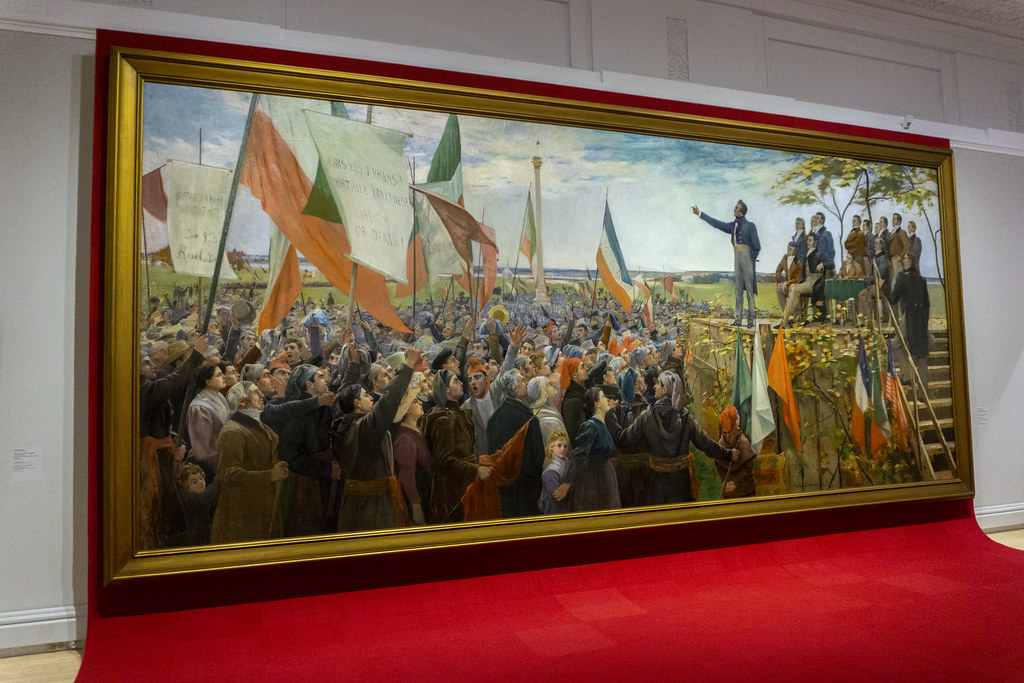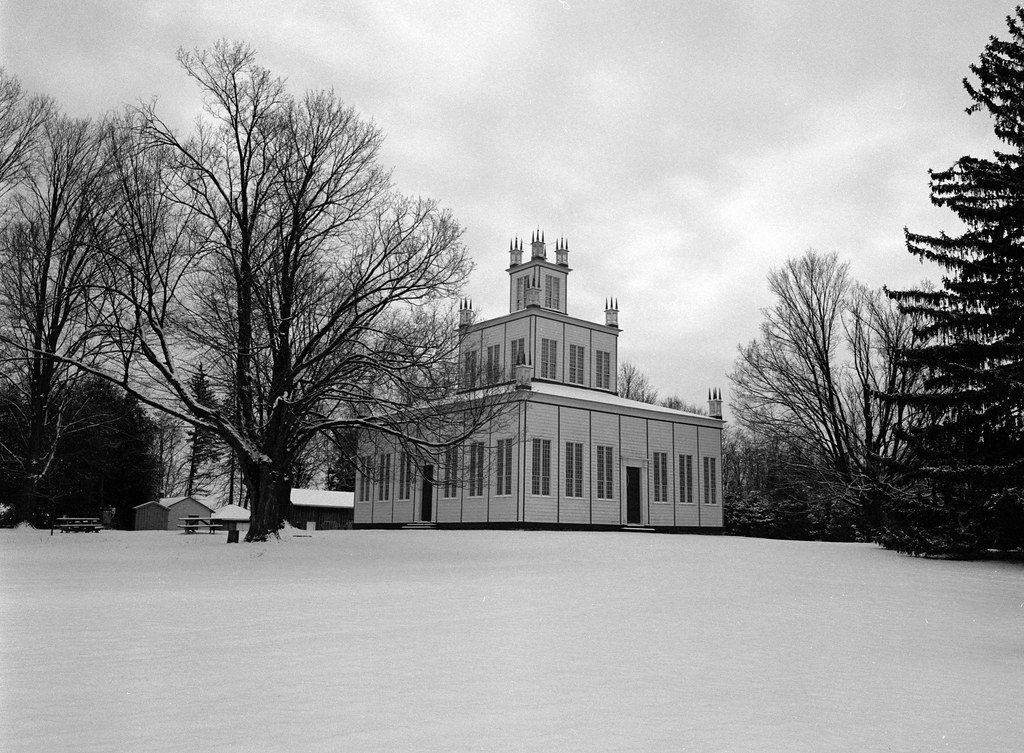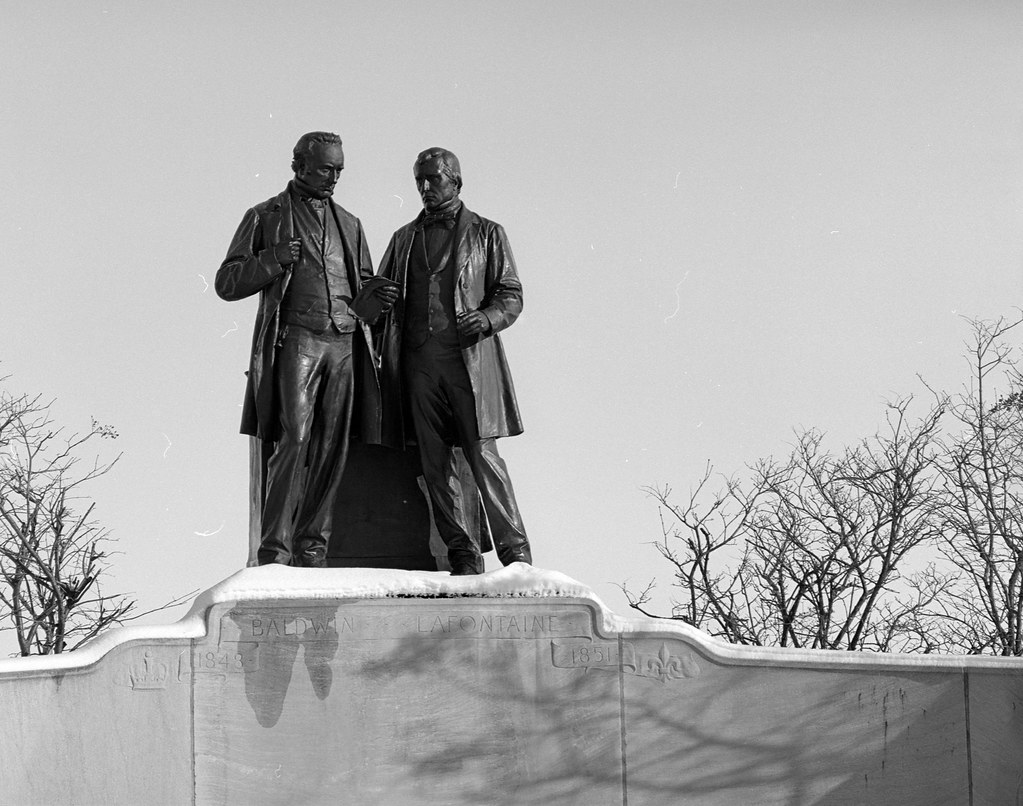Like Robert Baldwin, Louis Hypolite-La Fontaine is a figure in Canadian History that I have never learned about or even knew existed until I started researching this project. And even then, he nearly ended up playing a secondary role in my narrative. I quickly realised that if I had done that it would have done a great disservice to his role in Canadian History and his foundational efforts from the run-up to the Lower Canada Rebellions and into the establishment of Responsible Government and the unified reform movement in the Province of Canada. Born the 4th of October, 1807 the fourth son of a Boucherville carpenter, Louis never knew life in anything, but British ruled Lower Canada. Despite being the son of a carpenter and a member of the middle class, Louis showed a love of gaining knowledge at a young age. He learned to read and write, both of which were helped along by an excellent memory. He would attend the Collège de Montréal in 1820 and study the Classics. But in his final year, he dropped out, his focus now on the law and he joined a local firm as a lowly clerk. But even as a clerk Louis excelled and quickly began to study to become a lawyer in his own right, passing the exams and called to the Bar in 1828. Among the Montréal lawyers, Louis became a gifted advocate, well-spoken and respected among those he worked for and against in the courts. His 1831 marriage to Adele Berthelot only improved his standing in society and drove him to run for a seat in the Lower Canada Legislative Assembly. He won a seat for the district of Terrebonne, and in the assembly, he quickly was drawn into a growing reform movement becoming an ally to a fellow assembly member, Joseph-Louis Papineau. La Fontaine embraced the Patrioté movement, attending rallies and speaking alongside Papineau, dressing in locally produced clothing and using his skills as an orator in both the Assembly and in Public. He authored many handbills and essays promoting the movement, but as Papineau began to shift from reform to violent revolution, La Fontaine petitioned Papineau to take a more moderate approach. But as the calls for violence continued, the Lieutenant-Governor suspended Parliament, and Papineau seemed ready to rise, it was La Fontaine who went to the Governor urging him to reopen Parliament to prevent the rebellion. The Governor would not listen, and on the 27th of November 1837, the Lower Canada Rebellion opened. Fearing he could be caught up in the violence or even arrested, La Fontaine arranged for passage to England.

Sony a6000 + Sony E PZ 16-50mm 1:3.5-5.6 OSS
While in England, La Fontaine took the time to meet with several members of the English Reform movement that helped bring the 1832 reform act into being. But even still he was wary of the Whigs as well they sought to bring equality, they always desired power for their purposes. He returned to North American in March of 1838, travelling first to the United States visiting with several members of the Patrioté movement in exile including Papineau. He returned to Lower Canada and proceeded to throw himself into defending those still in jail awaiting trial for their involvement in the rebellion. His hope of change buoyed with the arrival of John Lambton, but his opinion changed when Lambton issued a writ of death on Papineau should he return to Canada. To appease the French-Canadians Lambton reduced or commuted the sentences of many in jail. But when La Fontaine faced public arrest while exiting Mass from Montreal’s Notre Dame in November in the face of renewed violence in November 1838, and he remained in jail until December without any formal charges. His time and Jail and the findings in the Durham Report only gave La Fontaine a renewed sense of purpose, not only to show England that French-Canadians were loyal subjects, not some backwards conquered society. He had no desire to see his people become like the Acadians or second-class subjects. He now faced a new threat, as Sir Charles Poulett Thompson, Lord Sydenham had no love of the Reform Movement and actively sought to suppress the French-Canadian culture and their presence in the new Legislative Assembly. La Fontaine found a rigged system; the government gerrymandered districts to reduce the voting power of reformers and French-Canadians. In the middle of this, he published a plea to many in the form of an Address to the Electors of Terrebonne. His address found an audience among English reformers in Canada West, and Louis began to exchange letters with Francis Hincks, who had a unique solution, why not run for a seat in Canada West. The seat selected was the 4th York District, one of two seats won by Robert Baldwin, and Baldwin gladly gave it up to allow La Fontaine to run. Through the help of Hincks, Baldwin, and David Wilson and the Children of Peace, La Fontaine easily won.

Mamiya m645 – Mamiya-Sekor C 45mm 1:2.8 N – Ilford HP5+ @ ASA-400 – Kodak HC-110 Dil. B 5:00 @ 20C
Balwin quickly found both a friend and ally in La Fontaine, he recognised the principles of Responsible Government in La Fontaine’s writing. Not only did the two men become allies and supporters, but Baldwin also fought for La Fontaine’s inclusion in Sydenham’s cabinet. The untimely death of Sydenham worked in favour of the now united reform movement, and the quick turn around worked in their favour and Sydenham’s replacement, Sir Charles Baggot had little choice but to allow the reformers to form the government. Baggot’s illness gave both Baldwin and La Fontaine a free hand to work towards their shared goal of responsible government. La Fontaine worked towards showing his fellow reformers in Canada East that the Union did not have to stifle their culture, and he used his position as Premiere and Attorney General to prove this, even working towards having the capital moved from Kingston to the far more multi-cultural Montreal. But all that ended with the death of Baggot and the arrival of Sir Charles Metcalfe. Metcalfe refused to work with the reformers and had no love of the French-Canadians either, and when Baldwin resigned, La Fontaine followed suit. The year-long crisis only galvanised both men as they worked together to spread the cause of responsible government, and to prove the point he gave up his seat in 4th York District and returned to Canada East to allow Baldwin to run in Canada West. Thanks to the efforts of La Fontaine, the reformers returned a large number to the Assembly in the elections, the showing for Canada West was far fewer thanks to the efforts of Metcalfe his Gerrymandering and the Orange Order. They didn’t let the loss stop them, La Fontaine stood next to Baldwin, supporting him whenever he spoke and promoted the cause of national unity and responsible government. But they made one small victory, in getting the capital moved to Montréal.

Nikon F5 – AF Nikkor 35mm 1:2D – Eastman Double-X (5222) @ ASA-200 – Kodak D-76 (1+2) 11:00 @ 20C
The reformers saw a chance in the elections of 1848 and won back majority control and were ready to bring the cause of responsible government to the Colonial Office, but they had no idea that the Colonial Office had changed their mind and were prepared to accept that the current method of colonial government could no longer be maintained. The arrival of Sir James Bruce, 8th Earl of Elgin, saw that the office was ready to grant some level of democratic autonomy to the province. The sudden freedom gave La Fontaine a chance to right a wrong he saw from the Rebellion and took the Canada West version of the Rebellion Losses bill and modified for Canada East. It would be his modification that caused many in the Conservatives to cry out in anger, as La Fontaine’s version allowed anyone, no matter their loyalty to apply for compensation due to losses from the rebellion. When Lord Elgin approved the bill, the city erupted into violence La Fontaine took shelter in Château Ramezay, as Tory-friendly mobsters ransacked his own home. And newspapers run by conservatives characterised La Fontaine as a miniature Napoleon Bonepart and while the blame on the violence laid at La Fontaine’s feet, Baldwin sprung to his friend’s aid and stood up to Sir Allan Napier MacNab and the Conservatives and continued the work of Government and saw the capital moved to Toronto. La Fontaine remained at his post and began to push through several reforms to the justice system in Canada East, mirroring the English system found in Canada West. But his health spiralled downwards and having achieved his goals in public life he quietly resigned on the 26th of September 1851 and returned to Montreal and his private law practice. Despite retiring from public life, whenever he appeared in court or spoke the galleries were filled with young lawyers and law students. His past service and his precise logical and firm manners saw the government appoint La Fontaine to the post of Chief Justice of Canada East on the 1st of July 1854. He worked towards abolishing the Seigneurial System in Canada East and through his overseeing of the tribunal he planned to write a history of the system in New France. Despite worsening health, he continued to work until discovered by his son. La Fontaine had suffered a stroke while in his chambers, and he was taken back to his home where he passed on the 25th of February 1864. His funeral was attended by 12,000 people and interred at the Notre-Dame-Des-Neiges cemetery in Montréal.

Mamiya m645 – Mamiya-Sekor C 150mm 1:3.5 N – Ilford HP5+ @ ASA-200 – Pyrocat-HD (1+1+100) 9:00 @ 20C
Like Robert Baldwin, there is little in Ontario to remember La Fontaine, only a monument to the shared work on Baldwin and La Fontaine stands on Parliament Hill in Ottawa, Ontario designed and built by Walter Allward, who is better known for his winning design of the Vimy Memorial. In Quebec, there is much more to remember La Fontaine, with most being in Montreal and the surrounding area. His family home still stands today in Boucherville, and a statue of La Fontaine stands nearby. A park named for La Fontaine and a highway tunnel that carries Autoroute-20 out of the city is named for Louis La Fontaine. His former house while he was Premiere still stands but lacks any historical designation. Oddly enough a mental hospital had his name attached to it in 1873, but in 2013 the hospital renamed itself to the Mental Health University Institute of Montreal which still operates today. And while his name is largely forgotten by many, La Fontaine proved an essential part of establishing meaningful change and showed that only through unity that crosses political and cultural differences can significantly change be made.